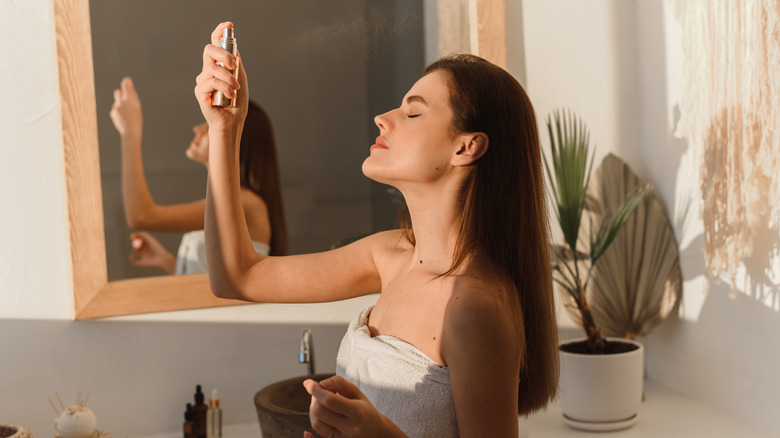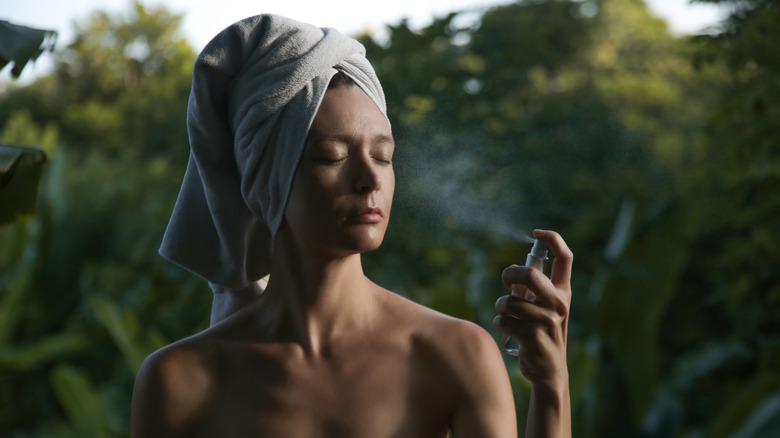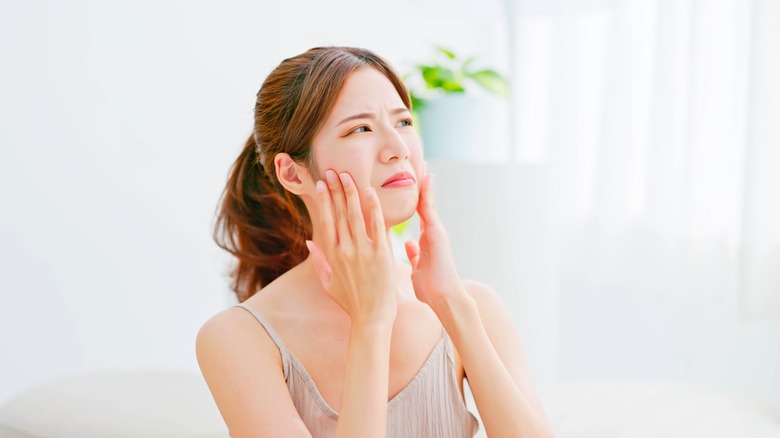Is An SPF Setting Spray Enough To Protect You From The Sun's Rays?
Who doesn't love spending some time under the sun? With so many activities you could take part in, basking in the sun is a great time. However, when enjoying the warmth of the sun's rays, you need to be careful with spending too much time in the sunshine. Because of the harmful rays, you want to take steps to protect your skin whenever you step outside. Even if you can't see the sun, the rays are there and can cause serious damage.
The best way to protect your skin from the sun is by applying an ample amount of sunscreen. According to John Hopkins Medicine, a minimum of SPF 30 is recommended for day-to-day use but ideally, you should use SPF 60 if you're spending time outdoors. Although it's known that sunscreen can help prevent damage, many still don't apply the correct amount of SPF. Much of this is because it can be challenging to apply sunscreen when you've already done your makeup.
Wearing makeup shouldn't be a reason to not apply sunscreen regularly, especially considering the amount of damage the sun can cause. Not wearing enough sunscreen can lead to sunburns and make you vulnerable to skin cancer. One popular way to avoid ruining your makeup with sunscreen is by applying a setting spray that includes SPF. While this is a great multi-purpose product, it's vital to know whether or not it can be enough to protect your skin.
Do SPF setting sprays really protect your skin?
It's no secret that setting sprays with SPF in them are some of the handiest products on the market. Along with keeping your makeup in place, they claim to protect you from the sun by offering SPF coverage. As Dr. Nikhil Dhingra, a New York-based dermatologist, explains via The New York Times, these products should be a bonus and not your only sunscreen application of the day. While products like SPF setting sprays are great for practicality, they aren't enough to give ample protection to the skin. For starters, SPF should be rubbed into the skin for it to be fully absorbed. With setting sprays, you aren't able to rub the product into your skin without ruining your makeup.
Typically makeup products that include SPF do not include the optimal amount needed to give coverage and protection. Products with SPF 15 or less are not enough to give you the protection you need against UV rays. As well, with sprays, it's challenging to know the actual amount of product you are applying in one area. Since setting spray is meant to lock your makeup into place, you can't spread the product — meaning there could be spots that are left untouched. While they may seem practical, setting sprays containing SPF should not be seen as your only source of SPF, but rather as additional coverage.
When and how to use sunscreen
Knowing that SPF setting spray isn't enough to protect your skin from the sun, it's vital to know the correct way and time to use sunscreen to get the best protection without ruining your makeup look. If you're looking to conceal your sunscreen, opt for a transparent sunscreen that you can place under your makeup. Transparent sunscreen will not give you a white cast or mess with your skin color, meaning your makeup will go on smoothly as always. Another option you have is to apply a tinted moisturizer that contains SPF 30 or more. The key to choosing the correct tinted product is to ensure it has over SPF 30, which will give you the best protection against the sun. Either one of these products will help as your base sunscreen to give you the most coverage against the sun throughout the day.
As an added bonus of SPF, you can always go for powdered sunscreen or your trusted setting spray with SPF. Both of these products can help add protection on top of your initial sunscreen application. The best aspect of adding these products to your routine is that they will help you reapply sunscreen. The Skin Cancer Foundation recommends reapplying your sunscreen every two hours to keep your coverage at its maximum. Adding these on top of your sunscreen is key to ensuring your skin stays safe from the UV rays so you can keep enjoying the outdoors.


